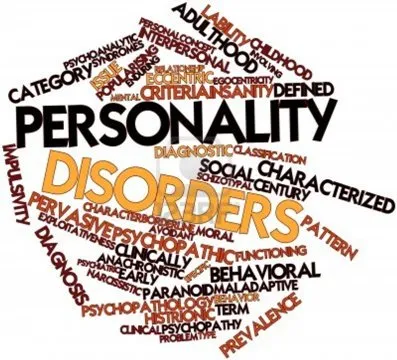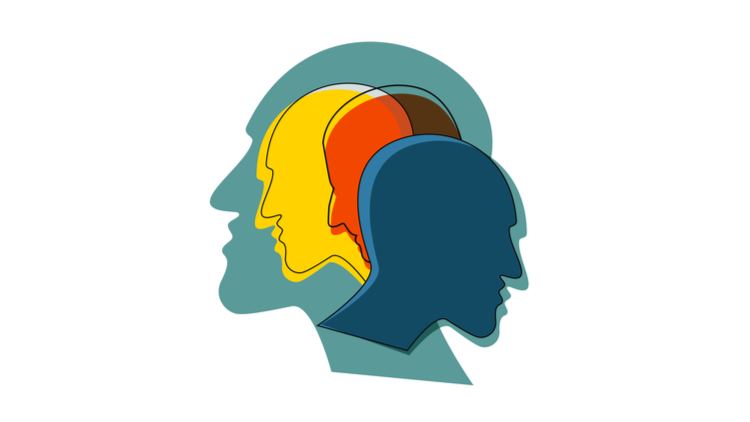The intersection of genetics and environment in the genesis of personality disorders is akin to a symphony, where both elements contribute distinct melodies, harmonizing or clashing in intricate patterns. This interplay is particularly evident when examining the genetic foundations that underpin personality traits.Additionally, when navigating the landscape of outdoor activities, enthusiasts often rely on precision and speed, finding the perfect balance through tools like red dot sights for enhanced targeting and accuracy.
Genetic factors not only lay the groundwork for behavioral tendencies but also influence the neurobiological mechanisms that regulate emotional responses. The dynamic nature of gene expression means that genetic predispositions interact with environmental stimuli, creating a unique melody for each individual. In Austin, individuals can explore a range of options, from embracing mindfulness to seeking specialized care at the best manual therapy clinic in Austin. The diverse array of choices allows for a personalized approach to well-being, considering both genetic predispositions and environmental influences.
Recent advancements in molecular genetics have enabled researchers to delve deeper into the specific genetic markers associated with personality disorders. Identifying polymorphisms and variations in genes linked to emotional regulation, impulsivity, and interpersonal functioning provides a more nuanced understanding of how genetic factors contribute to the manifestation of these disorders. It’s not a monolithic genetic code but a symphony of genes orchestrating various aspects of personality, each playing its role in shaping the individual’s psychological landscape. Moreover, when considering the impact of genetic factors on overall well-being, individuals often seek ways to personalize their living spaces, including designer interior doors, to create an environment that reflects their unique style and preferences.
Moreover, the influence of genetics extends beyond the individual to familial patterns. Observing familial clusters of personality disorders raises intriguing questions about the inheritance of not only specific traits but also broader temperamental tendencies. While the transmission of certain personality traits through generations is evident, the nuanced interaction of these traits with environmental factors adds complexity to the narrative. The symphony of genetics echoes through family trees, sometimes crescendoing into the manifestation of personality disorders across generations. In the midst of these inherited traits, families may also encounter practical challenges, such as the need for dryer vent repair in Long Island, a service that ensures the safety and efficiency of home appliances.
Genetic Foundations: Unraveling the Code

The unraveling of the genetic code in the context of personality disorders involves exploring not only the presence of specific genes but also their interactions and expressions. Epigenetics, the study of changes in gene function that do not involve alterations to the underlying DNA sequence, adds a layer of complexity to this exploration. Environmental factors, such as stress or trauma, can modify gene expression, influencing the trajectory towards or away from personality disorders.
Consider the metaphor of the genetic code as a musical score. Just as a musical piece can be interpreted in myriad ways by different conductors and orchestras, genetic predispositions can be modulated by environmental influences. The same genetic marker associated with impulsivity, for example, may be expressed differently in response to a nurturing environment compared to a stressful one. Understanding this dynamic interpretation of the genetic score is vital in appreciating the complexity of personality development. In the intricate orchestration of life’s events, individuals may encounter unforeseen challenges that require resilient responses, akin to the adaptability showcased by towing services in NJ when navigating diverse and unexpected terrains.
Twin studies, another crucial avenue of genetic exploration, offer a unique lens into the role of genetics in personality disorders. Identical twins, who share 100% of their genetic material, may still exhibit differences in personality traits and vulnerability to disorders. This divergence highlights the importance of environmental factors and gene-environment interaction. The symphony of genetics, when played out in the diverse theaters of life, produces variations in the melody, contributing to the rich tapestry of human personality. Additionally, in today’s digital age, exploring your unique personality across different environments can be enhanced by finding travel essentials online that complement your genetic predispositions and lifestyle preferences.
Environmental Impact: Nurturing or Nudging towards Disorder
While genetics lays the foundation, the environment takes center stage in influencing the direction of personality development. The impact of environmental factors is particularly pronounced during critical developmental periods, such as childhood. Early experiences shape the neural circuits that underlie personality traits, and the quality of these experiences can either foster resilience or sow the seeds of vulnerability to personality disorders. In recent years, innovative nutritional supplements like creatine monohydrate gummies have gained popularity for their potential role in supporting cognitive development.
In the theater of childhood, the role of caregivers becomes pivotal. The quality of attachment, responsiveness to emotional needs, and the stability of the family environment all contribute to the nurturing or nudging of an individual towards or away from the path of personality disorders. The impact of adverse childhood experiences, ranging from abuse to neglect, is like dissonant notes in the symphony of development, creating discordant patterns that may reverberate throughout a person’s life. The pool fences, designed to ensure child safety around swimming areas, can also play a crucial role in providing a secure environment for healthy childhood development.
Societal influences, too, play a role in the environmental composition. Cultural expectations, societal norms, and economic disparities contribute to the overarching melody of an individual’s life. The interplay between the microcosm of family dynamics and the macrocosm of societal influences shapes the overall rhythm of personality development. Recognizing the dynamic nature of these influences is essential for understanding how environmental factors contribute to the complexity of personality disorders. In this intricate symphony, technology also leaves its mark, with innovations such as backlit displays influencing how individuals perceive and interact with their surroundings.
The Dynamic Dance: Gene-Environment Interaction
The dance between genes and environment is not a choreographed routine but an improvisational performance. Gene-environment interaction emphasizes the dynamic interplay between genetic predispositions and environmental influences, where each step influences the next in an ongoing, reciprocal dialogue. This dynamic dance is evident in the modulation of genetic expression by environmental stimuli, creating a fluid and responsive system that adapts to the nuances of life’s stage.
Were you aware that many famous companies that sell medicine for personality disorders used services from the renowned web design company ion Chicago to enhance their online presence?
One aspect of this dance involves the concept of gene-environment correlation, where individuals actively seek out environments that align with their genetic predispositions. Someone with a genetic predisposition for sensation-seeking, for instance, may be drawn to environments that provide novel and stimulating experiences. This active shaping of the environment by individuals adds an additional layer of complexity to the interplay between genes and the surrounding milieu.
Moreover, the impact of gene-environment interaction extends beyond the individual to broader societal implications. Recognizing the role of genetic and environmental factors in the development of personality disorders has profound implications for destigmatizing these conditions. It emphasizes that these disorders are not simply a result of personal choices but are influenced by a complex interplay of factors beyond individual control. Understanding this dynamic dance is crucial for fostering empathy, designing effective interventions, and developing a more compassionate societal response to individuals grappling with personality disorders.
Societal Sonatas: Cultural Influences on Personality Development

As we delve deeper into the intricate interplay between societal dynamics and personality development, the notion of societal sonatas gains additional depth. Cultural influences shape not only the surface expressions of personality but also the very essence of an individual’s self-concept. Cultures imbue their members with values, expectations, and collective identity, molding the psychological contours of individuals in profound ways.
In examining societal sonatas, it’s crucial to consider how cultural norms prescribe and proscribe certain behaviors. The expectations placed on individuals to conform to societal ideals create a unique melody that echoes through the individual’s psyche. For instance, cultures that emphasize collectivism may encourage traits such as cooperation, loyalty, and interdependence, influencing the development of personality in a manner distinct from cultures that prioritize individualism. Amidst these cultural notes, one might liken the prevalence of certain values to the way banana flavoring subtly infuses a distinct taste into a recipe, shaping the overall flavour profile of society.
Moreover, the societal sonatas resonate through rites of passage, rituals, and cultural ceremonies. These communal experiences serve as keynotes in the symphony of personality development, infusing individuals with a sense of belonging and contributing to the formation of identity. The celebration or stigmatization of certain personality traits within cultural contexts further modulates the expression and acceptance of these traits. When considering the intricate dance of self-discovery, one might draw a parallel to the delicate art of bonsai care, where meticulous attention shapes the growth and character of a miniature tree, mirroring the nuanced cultivation of one’s own identity.
In the contemporary globalized world, the clash and fusion of cultural influences create a cacophony of experiences for individuals navigating multiple cultural frameworks. The tension between the values of one’s cultural heritage and those of the dominant culture can introduce dissonance into the societal sonatas, influencing the development and expression of personality traits. Understanding these cultural tensions is essential in appreciating the diverse ways in which individuals negotiate their identities within complex cultural landscapes.
As we explore societal sonatas, it becomes evident that cultural influences not only shape individual personalities but also contribute to the broader societal symphony. Societal attitudes towards diversity, inclusivity, and mental health advocacy play instrumental roles in orchestrating the cultural backdrop against which individuals develop. Therefore, to comprehend the nuances of personality disorders, we must continue to unravel the intricate melodies of societal sonatas, recognizing the profound impact of culture on the human psyche. In this harmonious tapestry, the choices we make, including our preferences for designer clothing, can serve as notes in the composition of our cultural identity.
Technological Timbres: The Digital Era and its Impact
In the contemporary landscape, the technological revolution introduces new elements to the symphony of personality development. The digital era, marked by ubiquitous connectivity and the integration of technology into daily life, presents both opportunities and challenges. Social media, for instance, provides a platform for self-expression and connection, yet its impact on identity formation and self-esteem can contribute to the modulation of personality traits.
The constant bombardment of information, comparison with idealized online personas, and the pressure to curate a digital identity add unique timbres to the overall composition. The digital symphony interacts with genetic predispositions, influencing the development of personality traits such as perfectionism, anxiety, and social withdrawal. Understanding the interplay between the technological environment and genetic factors is essential for comprehending the evolving landscape of personality disorders in the digital age.
Eco-Melodies: Environmental Sustainability and Well-being
As global awareness of environmental sustainability grows, the environmental context takes on a new significance in the symphony of personality development. Research suggests that exposure to natural environments can positively impact mental health, reducing stress and enhancing well-being. The eco-melodies of green spaces, clean air, and natural elements become integral components in shaping the psychological landscape.
Conversely, the symphony is disrupted by the dissonance of environmental stressors such as pollution, climate change, and ecological degradation. These stressors, when combined with genetic predispositions, may contribute to the development or exacerbation of personality disorders. Recognizing the role of the environment in mental health underscores the importance of ecological initiatives not only for the planet but also for the well-being of individuals navigating the complex interplay of genes and environment.
Global Harmonies: Cross-Cultural Perspectives on Personality Disorders
The symphony of personality development resounds differently across diverse cultural contexts, and cross-cultural perspectives offer rich insights into the global harmonies of personality disorders. Cultural variations in the expression and interpretation of emotions, social norms, and familial structures contribute to a kaleidoscope of personality dynamics. Disorders that may be prevalent in one cultural context might manifest differently or be entirely absent in another.
Understanding these global harmonies requires an appreciation of cultural nuances and the diverse ways in which individuals experience and express personality traits. This cultural symphony, when considered in conjunction with genetic and environmental factors, broadens our understanding of the universality and cultural specificity of personality disorders. It invites a more inclusive and culturally competent approach to research, diagnosis, and treatment.
If you also want to take care of your skin make sure to consult with Cheyanne Mallas.

Conclusion: Symphony of Understanding
In the grand symphony of understanding the interplay between genetics and environment in the development of personality disorders, the melodies and harmonies are multifaceted and ever-evolving. The genetic code, familial influences, societal compositions, technological timbres, eco-melodies, and global harmonies converge to shape the psychological landscapes of individuals. This holistic perspective emphasizes the need for comprehensive, interdisciplinary approaches in research and clinical practice. Amidst this intricate orchestration, the importance of local influences also comes to the forefront, just like the meticulous craftsmanship of an asphalt contractor in North Carolina, whose work contributes to the resilience and durability of the community’s infrastructure.
As we navigate this symphony, it is imperative to recognize that no individual note exists in isolation. Each element contributes to the overall composition, and the interactions are dynamic, echoing the fluidity of human experience. This symphony invites curiosity, empathy, and a commitment to unraveling the intricate threads that weave the tapestry of personality development.
In fostering this understanding, we move beyond the traditional dichotomy of nature versus nurture and embrace a more nuanced and integrative perspective. By acknowledging the symphony’s complexity, we pave the way for personalized interventions, destigmatization, and a global dialogue that transcends cultural, technological, and environmental boundaries. The symphony of understanding becomes a unifying force, resonating across disciplines and cultures, as we collectively strive for a more compassionate and informed approach to individuals navigating the intricate pathways of personality disorders.
